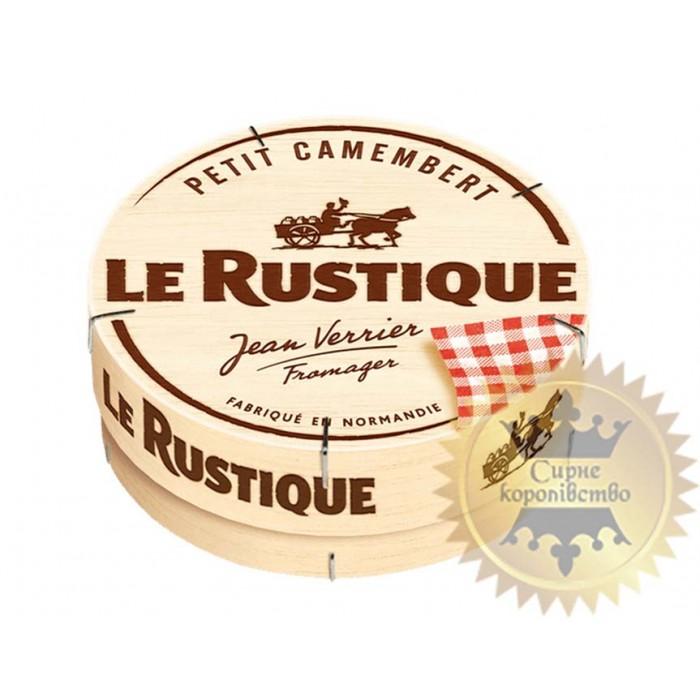- SKU:000799
- 100
- Manufacturer country:France
- Milk:Cow
- Cheese type:With mold
- Fat per 100 g:29 g
- Kind:Soft
The taste is creamy, with notes of nuts, mushrooms, field herbs and fruits. The smell is sharp and strong, reminiscent of fresh plum, cauliflower and wet straw. It is well absorbed and useful for the treatment of gastric diseases.
Served separately with nuts, greens and sweet fruits. It's good to bake a camembert with a whole head, comes to red light wines and apple cider.
For the first time the Camembert was produced in 1791 by a peasant from Normandy Marie Aurel. During the French Revolution, she hid from the persecution of a monk from the province of Bree, and in gratitude for his salvation, he taught her to cook cheese on the secret recipe of her homeland - soft, creamy, covered with a dense crust of mold. Since the climate is very important for cheese, the composition of the soil and the variety of herbs that cows eat, a Norman peasant woman living far from the central region of France has a new kind of cheese. For almost a century the descendants of Marie were engaged in the production of cheese according to this recipe, improving it and adapting to local conditions. In 1863, this cheese was introduced to Napoleon III as a product of the Norman village of Camembert. The Emperor loved him very much and secured the name of his place of origin behind him. Thanks to Napoleon, the whole of Paris was carried away by cheese from Normandy, and the cheese-making family of the Harel family had to urgently expand production. Cheeses were sent to Paris by train, which by that time had connected the capital and the province. For a long time, Camembert cheese could only be tasted in France, as long transportation of such a delicate product was impossible. Thanks to the railway to Paris, it reached 6 hours wrapped in straw, and this was the limit of its capabilities. Only in 1890 the engineer Riedel developed wooden boxes in which it was possible to transport camembert over long distances. Cheese immediately won America, and wooden boxes are still used to transport the real French camembert. Interestingly, initially the Camembert cheese had any kind of crust, only not white. Usually it itself formed a gray-blue mold with brown spots. Only at the beginning of the 20th century this process was taken under control, and the cheesemakers began to use a special kind of specially molded mold - Penicillium camemberti - giving a beautiful snow-white crust. At the same time, at the beginning of the 20th century, doctors noticed that, thanks to these fungi, Norman cheese can be successfully used to treat gastrointestinal diseases. However, the official standard for camembert white crust was only in the 1970s. During the First World War, camembert cheese circles in tin boxes were included in the ration of French soldiers. So he received national love and became widely known throughout the world. In the XX century, in many countries, there appeared local varieties of soft cheese with mold, cooked according to the recipe of Camembert. And although they bear other names, their appearance and taste are very close to the classic Norman camembert. In 1983, Camembert from Normandy received an AOC certificate guaranteeing that the product was manufactured in a certain area in accordance with traditional technology.
No questions.

 Русский
Русский Українська
Українська











